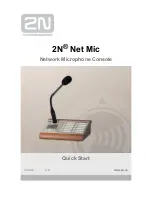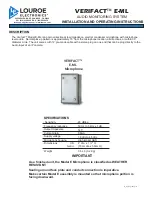
31
antenna wires. Also the interconnect wires should be routed away from the radio stack.
3.1 Attach the three EDC 37-pin Wire Harnesses to the EDC:
Secure the connectors using the supplied mounting screws.
3.2 Connect the EDC Harness to the Temperature Probes:
Route each of the temperature cables in the EDC harness to the appropriate temperature probe. Cut the
wires to length, install the appropriate connectors (see the “Working with Connectors” section of this
manual for more information) and connect to the temperature probe. When connecting to a temperature
probe, leave some slack in the cable exiting the probe to prevent damage to the probe over time.
3.3 Connect the EDC Harness to the Pressure Transducers:
Route each of the pressure cables in the EDC harness to the appropriate pressure transducers. Cut the
wires to length, install the appropriate connectors (see the “Working with Connectors” section of this
manual for more information) and connect to the pressure transducer. When connecting to a pressure
transducer, leave some slack in the cable exiting the transducer to prevent future damage to the trans-
ducer.
Rin
Gnd
EDC
Resistive Fuel Level
(4ea.)
Bottom Connector
332-Ohms
To Capacitive Signal Out
(0 to approx 150 mV)
+10V, (Red, pin 15)
Gnd, (Blk, pin 16)
Signal (Wht, pin 14)
FT-60, FT-90, FT-180
Fuel Flow Transducers:
EDC
Fuel Flow Input
(1ea.)
Top Connector
3.4 Connect the EDC Harness to the Shunt:
Route the EDC Amps wires to the Shunt. The way the Shunt is installed in the aircraft determines which
lug will be used as "+" (see “Installing the Shunt” in the previous section of this manual). The EDC +Amp
Input wire (orange) should be connected to the small lug on the "+" side of the Shunt. The EDC -Amp
Input wire (brown) should be connected to the small lug on the "-" side of the Shunt.
3.5 Connect the EDC Harness to the Fuel Flow Transducer:
Route the fuel flow cable in the EDC harness to the Fuel Flow Transducer. Cut the wires to length, install
the appropriate connectors (see the “Working with Connectors” section of this manual for more informa-
















































